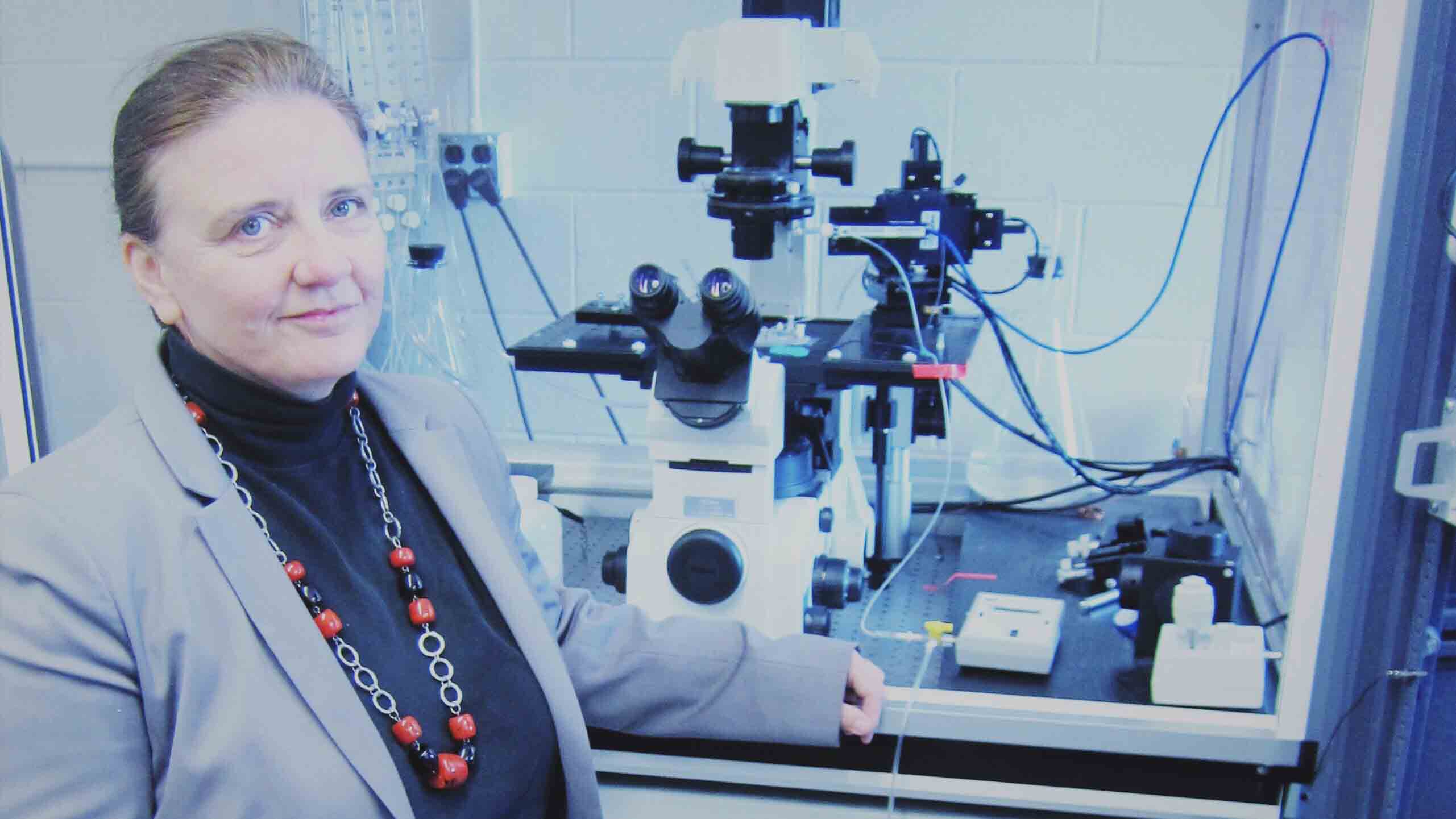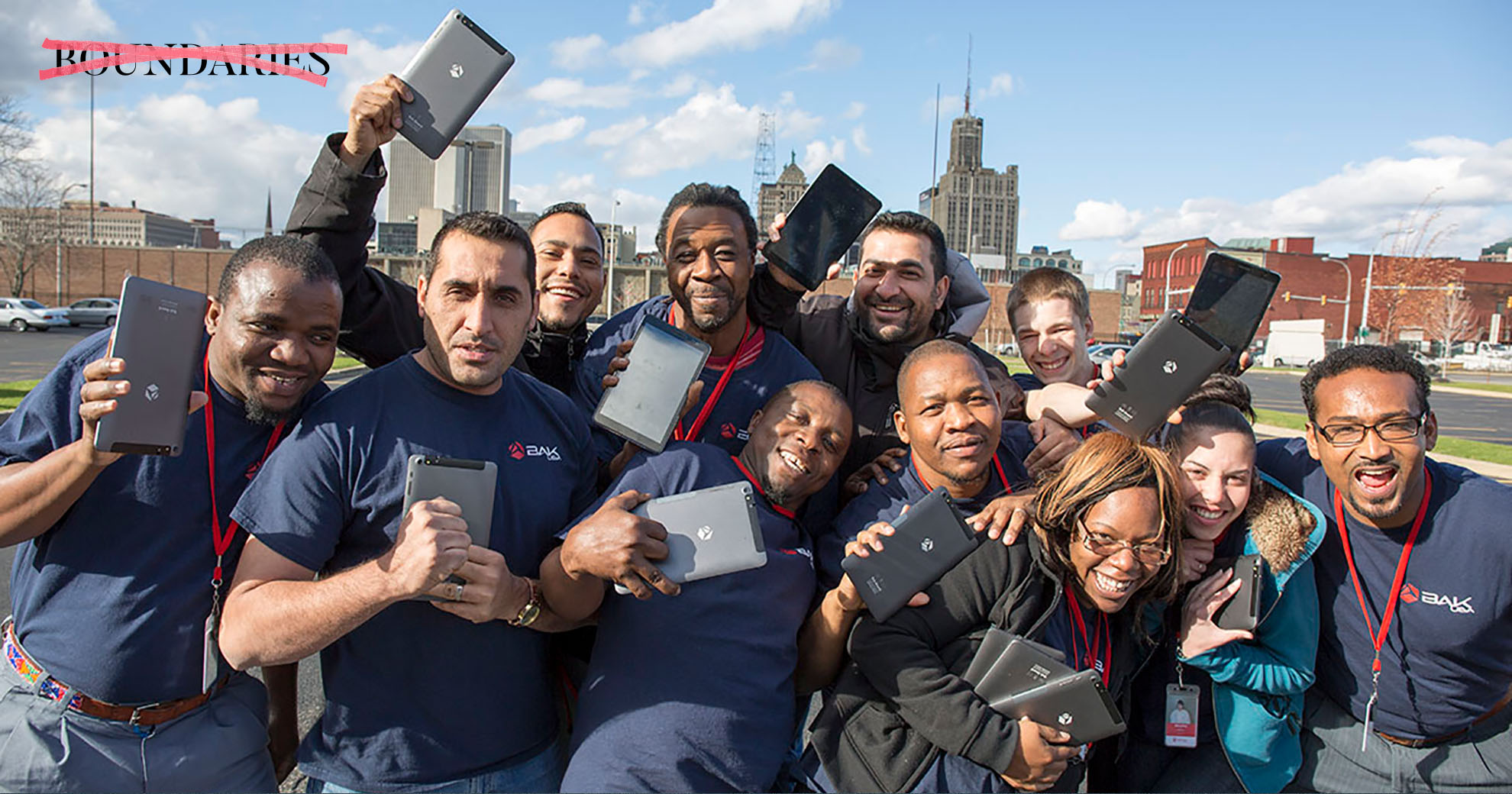By Kristy Mangel – Qween City
When Dr. Glenna Bett first told her friends in the U.K. about scoring her dream job, they had questions.
“Buffalo, where is that? Texas?”
Her American friends were equally incredulous.
“Buffalo. Umm. Do you know about Buffalo? You sure about this?”
That was 1995. “The University at Buffalo was one of a handful of universities that had a biophysics department, and it was one of the leading places for ion channel research, which is technically what I do. It was a great opportunity to come here,” Bett said.
Fast-forward 20+ years into her tenure at the University at Buffalo, and Bett, both Vice Chair for Research in the Department of Obstetrics and Gynecology in the Jacobs School of Medicine and CEO of a swiftly expanding biotech company, doesn’t have a lot of downtime these days. “We’re in a rapid growth phase right now. Things are happening very, very quickly; there’s not a lot of down time. It’s a lot of fun seeing a company grow at the rate that we’re growing. It’s very exciting.”

The company, called Cytocybernetics, was founded by Bett and her research partner, Dr. Randall Rasmusson, professor of physiology and biophysics, also at UB, in 2014. “Cytocybernetics formed because of technology we developed in the University at Buffalo research labs. We’ve had incredible support from the university to get this off the ground. There’s a real understanding of how important it is to take our research and make it commercially available to others,” she said.
The company initially blossomed from a technological breakthrough the two developed in the simulation of human heart cells, dubbed the Cybercyte. This device soon became a sought-after commodity in the research community, and gave Bett and Rasmusson the inspiration to begin thinking outside of their own research to see what this thing could really do.
“Our goal is to make new medications safer. Whenever a drug comes to market, it has all of these wonderful qualities, but, it’s also got the potential for side effects. Some of them, they’re not so bad. Dry mouth? We can live with that if it’s going to solve a bigger problem. A little sleepiness? Well, that’s getting on the borderline of not being able to function so well – don’t drive, don’t operate heavy machinery, this kind of thing. The side effects that you do not want are ones like, heart attacks, cardiac arrhythmia. They are really, really bad.”
The technology Bett and Rasmusson developed have the ability to identify faulty compounds earlier and more accurately in the pre-trial research and development stage of new pharmaceuticals, saving not only a company potentially 1 to 2 billion dollars, but, quite literally, saving actual human lives.

“The standard test right now, the early go/no-go decision maker, is wrong 30 percent of the time,” Bett said. “We have a better test….We’re more accurate, we have fewer false positives, more good negatives.” Currently 70 percent of pre-clinical drugs are dropped from the development pipeline because they have the potential to cause heart attacks. “It’s bizarre!” Bett exclaimed.
“You want to identify those bad drugs early, and get rid of them. That’s where we come in. We have a better method of identifying which drugs are bad, and getting rid of them.”
Bett points directly to her employer when asked about the first steps in developing her biotech start-up. “I’ve got to give full credit to the University at Buffalo and to the people here,” she said.
At the behest of the university, Bett attended the Buffalo Pre-Seed Workshop, hosted by UB’s New York State Center of Excellence in Bioinformatics and Life Sciences, in 2015. It was this initial opportunity that gave her the building blocks to form a small business, quite the different world from the research lab. The participating group met over several weeks, learning how to pitch their ideas to potential investors and develop working business plans. “That was a very important point for us,” she said.

It was here too that Bett first became acquainted with the high-stakes start-up competition 43North, leading her to enter the competition.
“To get that start in understanding the start-up scene, and how to interact with them, that was huge.”
They won $500,000 at 43North the next year. This led to their involvement with the Innovation Center, owned and operated by the Buffalo Niagara Medical Campus, Inc. (BNMC). The BNMC is “home to disruptive new technologies and scientific advancements driven by thought-leaders in clinical care, research, education and business,” according to their website. Prior to their win at 43North, the company had been accepted into START-UP NY, an initiative that allows new and growing businesses the opportunity to operate in New York State tax-free for up to 10 years while situated near or on a qualifying university or college campus.
The business end of things was starting to get serious. To get a foothold in this particular world, Bett entered a pitch competition ran by the Women’s Business Center at Canisius College, “Which is just the most incredible organization,” she said.
The Women’s Business Center gave participants training and feedback on pitching, and Bett can’t say enough good things about their work with her and the other small businesses she spent time with during that year. “I didn’t win any cash in that competition, but what I won – probably more important than the cash – was the opportunity to take part in the Women’s Business program there,” she said.
“I took their course, and so I was working with other small business owners, and that was incredibly helpful — I can’t tell you how helpful that was. You’re sitting in a room, and there were all kinds of people; people who were in fashion, people in education, retail, people who were in therapy, all kinds of things. Yet, you all had so many common problems. It was just nice to have a space where you could talk about some of the issues you were having that had nothing to do with the business,” she said.
Although coming to the seemingly discordant business world from a university setting, Bett isn’t fazed. Running a small business is on par with running a research lab, she said.
“Research labs are essentially run as small businesses. You have to apply for funding from the granting agencies, which is in some ways similar to “pitching” to investors. They have to believe in your proposed plan of research (your “product”), and, once funded, you have to complete the specific aims (deliverables). The grant enables you to hire personnel, buy supplies, and pay for the research to be completed. So, professors in research labs have to create, manage, and balance the budget, have to recruit and manage staff, including all payroll issues, apart from actually cutting the checks,” she said. “In many ways, the paperwork required to run a business is less cumbersome than the paperwork required by the university to run a lab!”
With customer demand and sales continuously increasing across the U.S., the UK, and Singapore, Cytocybernetics is hitting its stride as a business. The company is already developing second and third generations of the technology as well, which is scheduled to roll out in the very near future.
Amidst this progress, Bett is letting herself be excited. “We’ve got a lot more coming soon,” she said. “It’s moving very fast right now.”




